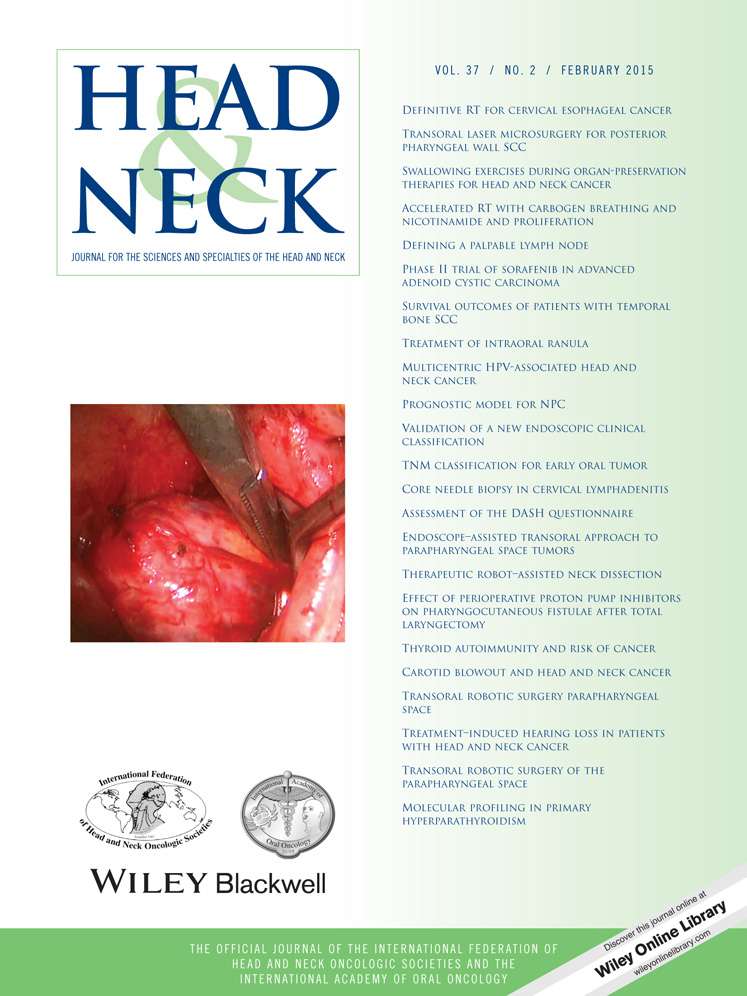Effect of perioperative proton pump inhibitors on the incidence of pharyngocutaneous fistula after total laryngectomy: A prospective randomized controlled trial
Abstract
Background
Pharyngocutaneous fistula is a common complication of total laryngectomy. We hypothesized that perioperative proton pump inhibitor (PPI) treatment could reduce the incidence of pharyngocutaneous fistulae.
Methods
This prospective placebo-controlled double-blind randomized controlled trial compared PPI treatment (14 days enteral omeprazole) with a placebo in patients undergoing primary total laryngectomy.
Results
Forty patients were randomized into PPI (n = 21) and placebo arms (n = 19). One of 21 patients receiving omeprazole developed a fistula in comparison to 6 of 19 patients in the placebo group (p = .04). No other statistically significant risk factors for pharyngocutaneous fistula were identified. The mean hospital stay of patients with and without a fistula was 32 and 7.5 days, respectively.
Conclusion
Pharyngocutaneous fistulae result in prolonged hospitalization and morbidity. We observed a statistically significant reduction in fistulae with PPI prophylaxis. Further research to better define the role of reflux and antacid management is suggested. © 2014 Wiley Periodicals, Inc. Head Neck 37: 255-259, 2015




